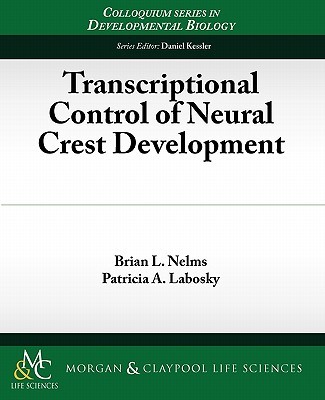
- We will send in 10–14 business days.
- Author: Brian Nelms
- Publisher: MORGAN & CLAYPOOL
- ISBN-10: 161504048X
- ISBN-13: 9781615040483
- Format: 19.1 x 23.5 x 1.3 cm, minkšti viršeliai
- Language: English
- SAVE -10% with code: EXTRA
Reviews
Description
The neural crest is a remarkable embryonic population of cells found only in vertebrates and has the potential to give rise to many different cell types contributing throughout the body. These derivatives range from the mesenchymal bone and cartilage comprising the facial skeleton, to neuronal derivatives of the peripheral sensory and autonomic nervous systems, to melanocytes throughout the body, and to smooth muscle of the great arteries of the heart. For these cells to correctly progress from an unspecifi ed, nonmigratory population to a wide array of dynamic, differentiated cell types-some of which retain stem cell characteristics presumably to replenish these derivatives-requires a complex network of molecular switches to control the gene programs giving these cells their defi ning structural, enzymatic, migratory, and signaling capacities. This review will bring together current knowledge of neural crest-specifi c transcription factors governing these progressions throughout the course of development. A more thorough understanding of the mechanisms of transcriptional control in differentiation will aid in strategies designed to push undifferentiated cells toward a particular lineage, and unraveling these processes will help toward reprogramming cells from a differentiated to a more naive state. Table of Contents: Introduction / AP Genes / bHLH Genes / ETS Genes / Fox Genes / Homeobox Genes / Hox Genes / Lim Genes / Pax Genes / POU Domain Genes / RAR/RXR Genes / Smad Genes / Sox Genes / Zinc Finger Genes / Other Miscellaneous Genes / References / Author Biographies
EXTRA 10 % discount with code: EXTRA
The promotion ends in 22d.01:37:08
The discount code is valid when purchasing from 10 €. Discounts do not stack.
- Author: Brian Nelms
- Publisher: MORGAN & CLAYPOOL
- ISBN-10: 161504048X
- ISBN-13: 9781615040483
- Format: 19.1 x 23.5 x 1.3 cm, minkšti viršeliai
- Language: English English
The neural crest is a remarkable embryonic population of cells found only in vertebrates and has the potential to give rise to many different cell types contributing throughout the body. These derivatives range from the mesenchymal bone and cartilage comprising the facial skeleton, to neuronal derivatives of the peripheral sensory and autonomic nervous systems, to melanocytes throughout the body, and to smooth muscle of the great arteries of the heart. For these cells to correctly progress from an unspecifi ed, nonmigratory population to a wide array of dynamic, differentiated cell types-some of which retain stem cell characteristics presumably to replenish these derivatives-requires a complex network of molecular switches to control the gene programs giving these cells their defi ning structural, enzymatic, migratory, and signaling capacities. This review will bring together current knowledge of neural crest-specifi c transcription factors governing these progressions throughout the course of development. A more thorough understanding of the mechanisms of transcriptional control in differentiation will aid in strategies designed to push undifferentiated cells toward a particular lineage, and unraveling these processes will help toward reprogramming cells from a differentiated to a more naive state. Table of Contents: Introduction / AP Genes / bHLH Genes / ETS Genes / Fox Genes / Homeobox Genes / Hox Genes / Lim Genes / Pax Genes / POU Domain Genes / RAR/RXR Genes / Smad Genes / Sox Genes / Zinc Finger Genes / Other Miscellaneous Genes / References / Author Biographies


Reviews